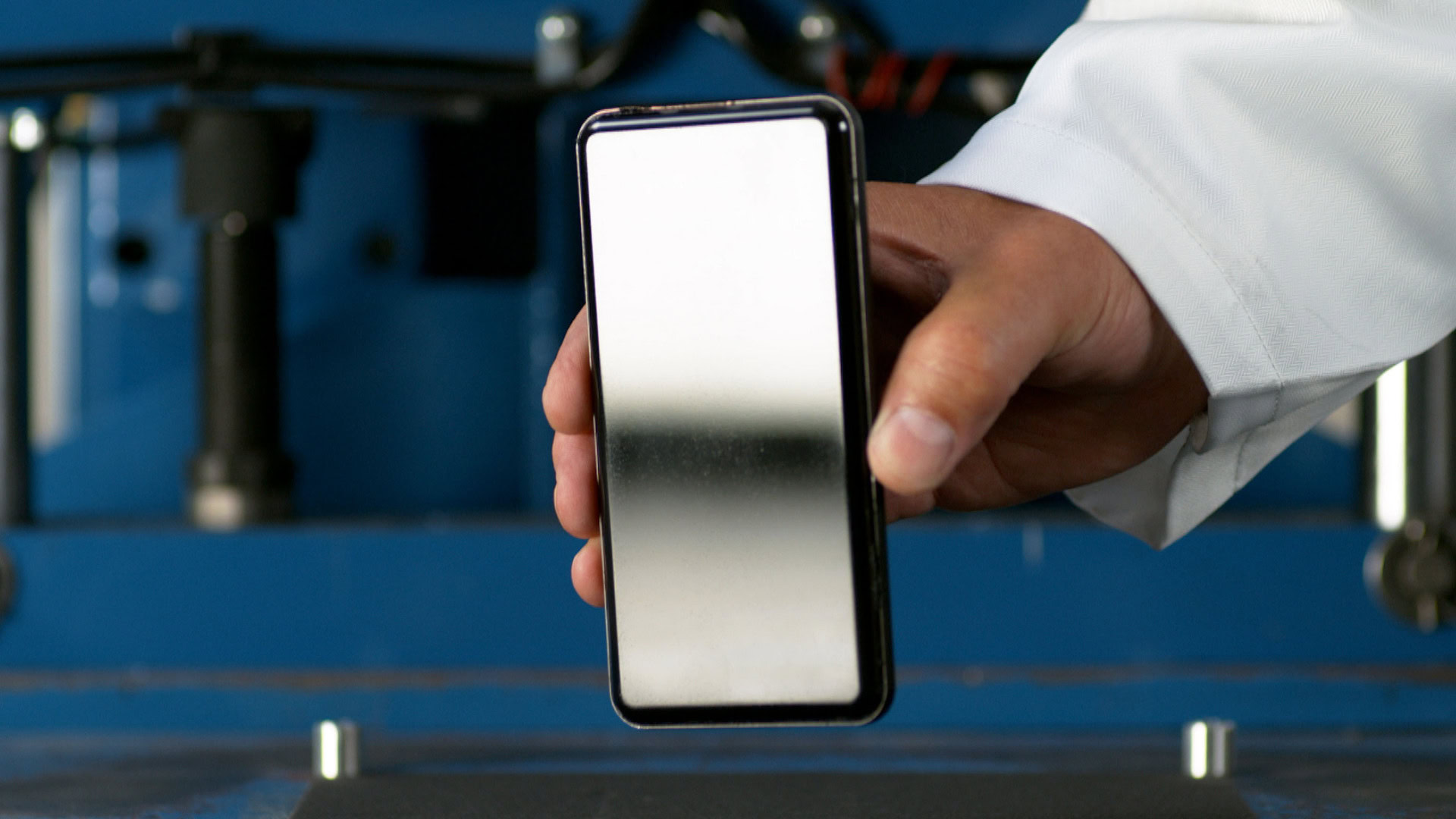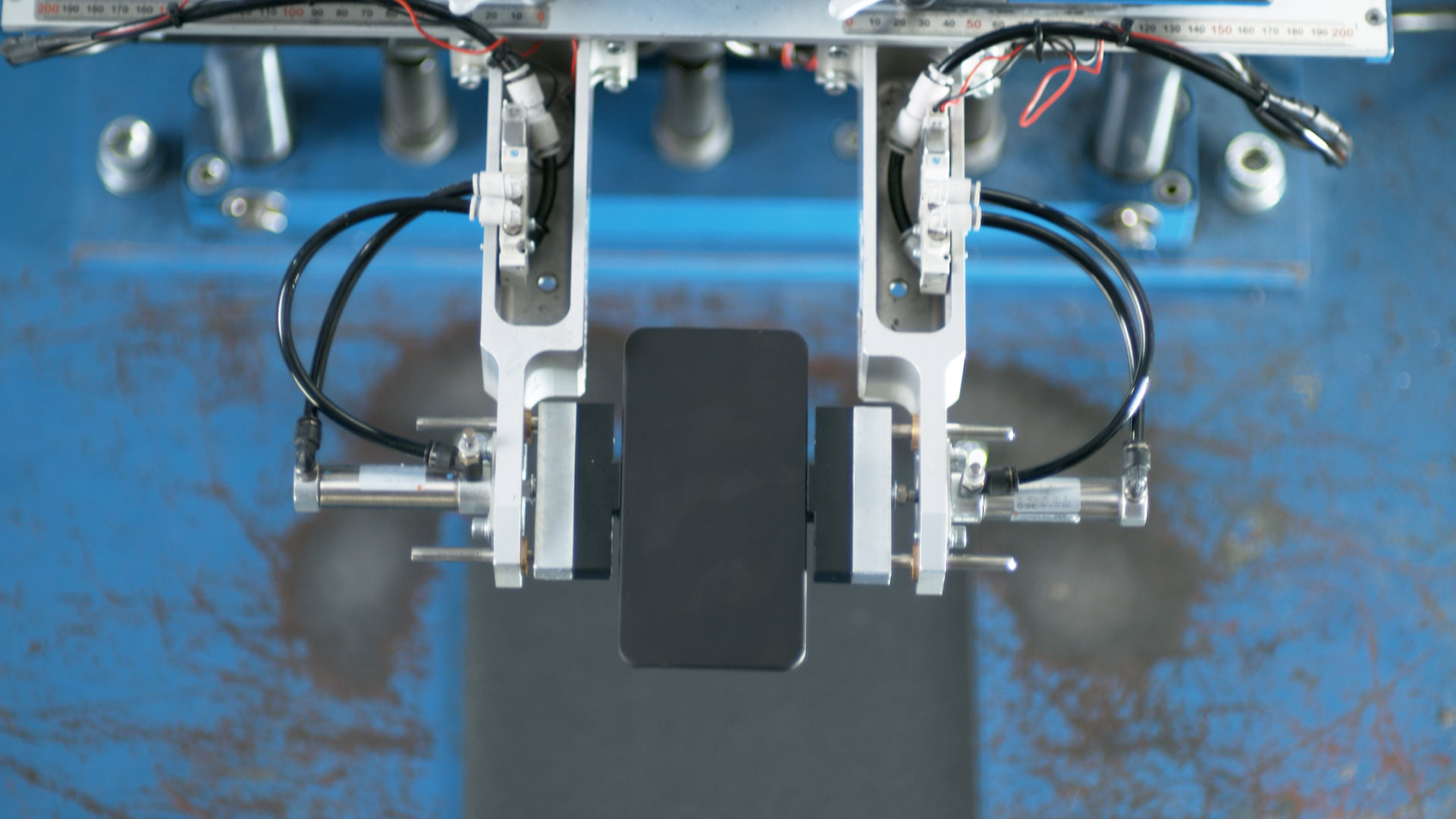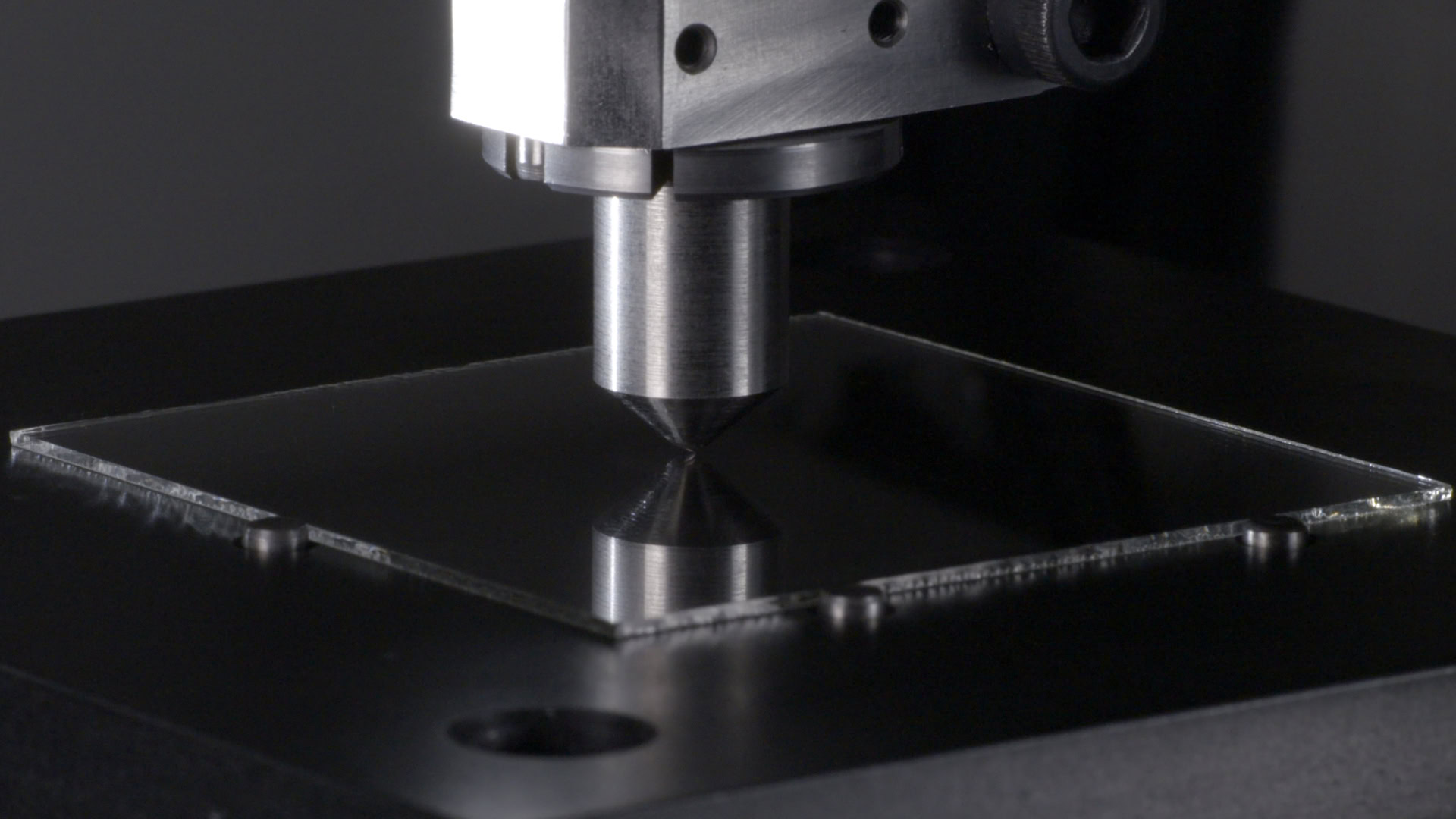Affiliate links on Android Authority may earn us a commission. Learn more.
Gorilla Glass Victus brings 2-meter drop protection, doubles scratch resistance
Published onJuly 23, 2020

Gorilla Glass-maker Corning typically only announces a new iteration of its device protection glass every couple of years. These announcements historically occur when a major breakthrough is achieved. These typically occur in either scratch resistance or drop protection – the twin pillars of mobile glass – but never both.
Corning’s latest glass, Gorilla Glass Victus, achieves significant improvements on both critical fronts at the same time, a first in the company’s history. In short, Gorilla Glass Victus promises 2m drop protection and doubles the scratch resistance of Gorilla Glass 6. This is big.
Related: How much does it cost to replace a foldable phone’s screen?
What about Gorilla Glass 7?
In our briefing, Corning’s VP of technology and product development, Jaymin Amin, didn’t want to comment on the fate of Gorilla Glass 7, preferring to focus instead on Victus’ simultaneous advances. He said that at Corning, the feeling was that successfully tackling both problems at the same time warranted a new name to set it apart from all that had come before it.
From other company representatives, we’ve learned that, for all intents and purposes, Victus is the successor to Gorilla Glass 6. That said, Corning may still release a product under the Gorilla Glass 7 name or start appending numbers to the end of Victus – we’ll just have to wait and see. A rose by any other name would still be as strong though, so don’t let the name change concern you.
What sorcery is this?
As a self-confessed glass nerd (sad, I know), I was intrigued to know what revolutionary new production process or previously unheard-of materials afforded such a major breakthrough. The answer? Hard work and over a decade of smart people doing smart things. Not as exciting, perhaps, as a new mineral found in an asteroid or developments in nanotechnology, but much more pragmatic.
Gorilla Glass Victus promises 2m drop protection and doubles the scratch resistance of Gorilla Glass 6.
Corning as a glass company turns 170 next year, and its Gorilla Glass division has been putting custom glass on phones since the original iPhone in 2007. The company’s scientists “spitball” thousands of potential glass compositions on paper, then run small batches of the most promising. Those samples then provide the concrete data that eventually lets Corning hone in on a product like Victus. It’s the product of years of accumulated knowledge with a dash of alchemy.
Corning has been focusing on drop protection and thinness for the last several years in response to consumers’ and manufacturers’ demands. Scratch protection had for several years been deemed “good enough.” Now that consumers are holding onto phones for longer, scratch resistance is back on the list of priorities. Rather than just switch its focus to the other side of the coin as it usually does, Corning decided to tackle both scratch and drop at the same time.
Up next: Inside Corning’s Gorilla Glass lab

How strong is Victus?
The current generation of mobile glass from Corning, Gorilla Glass 6, can survive multiple drops from 1.6m and provides baseline scratch resistance. This level of scratch resistance has remained pretty much unchanged since Gorilla Glass 3 (subsequent generations focused more on reducing the thickness required for the same strength or on improving impact resistance).
According to Corning, Gorilla Glass Victus can withstand multiple drops from a height of 2m. Alongside this, Victus offers 2x the scratch resistance of Gorilla Glass 6 and 4x the resistance of competitors’ aluminosilicate glasses. Amin tells us this all comes without any necessary increase in thickness.
Manufacturers can improve strength using the same thickness of Victus or reduce glass thickness while maintaining current levels of durability.
Corning tests its glass at the same thicknesses internally for consistency’s sake but the company tells Android Authority that an (unnamed) partner is currently looking at how thin it can make Victus while still offering competitive levels of strength and scratch resistance. This will likely be the thing to look out for in future – how thick the Victus layer on upcoming phones is, compared to previous smartphones using Gorilla Glass 6.
Wherever manufacturers can scrape out additional internal space while maintaining device thinness, they’ll do it (RIP the headphone jack). So just because a phone uses Victus doesn’t necessarily mean exponentially better performance. Manufacturers may well “thin it down” to provide Gorilla Glass 6-levels of strength by using a thinner layer of Victus. It’s all a question of rigidity, thinness, and potential space savings but is something to be aware of when you see “Victus” appearing in marketing materials.
Who’s signed on?
Samsung will be the first manufacturer out of the gate to use Victus, with the Galaxy Note 20 being the obvious contender. Amin told us that manufacturers will initially deliver Victus in the premium space so we can expect to see it in other flagships in the second half of 2020.
Victus actually costs Corning the same to manufacture, so production and procurement costs shouldn’t be a barrier to it making its way to mid-range and entry-level devices in time. Glass typically costs less than 1 percent of the overall cost of a phone – try telling that to the guy fixing your cracked screen for $150!
Other manufacturers will be announced shortly, but given the same costs of production, it’s reasonable to assume that wherever Gorilla Glass 6 is currently being used, next year Victus will be found in its place. Victus is not only applicable to the front and back glass of phones (working very well with 5G antennas), it will also find applications in wearables and on camera cover glass.

Victus vs Sapphire Glass
Sapphire is a strong, but brittle glass (not to mention expensive). Amin explains that it needs to be relatively thick to achieve its strength, but scratches comparatively easily compared to Gorilla Glass using the industry-standard Knoop Diamond Test. According to Amin, sapphire typically scratches under a diamond pick at 1 or 2 Newtons of force. This is due to its synthetic crystalline structure, with scratches typically appearing along the planes of the crystals.
Most aluminosilicate glass solutions and previous generations of Gorilla Glass scratch at between 2-4 Newtons in the Knoop hardness test. Gorilla Glass Victus scratches between 7-10 Newtons. Combine that with a 25% improvement in impact resistance and you can see why Corning is so eager to get Victus into your hands. Even if it occasionally slips out of them.
Consumers are willing to pay a premium for better durability but Victus costs the same to make.
Interestingly, Corning’s press release states that consumers are willing to pay a premium for better durability. Knowing Victus’ pricing, we’ll just have to wait and see if manufacturers bump their prices, citing “improved durability.” The proof is in the pudding, so we’ll reserve judgment for now. But if you’re due an upgrade and Victus is everything Corning claims it is, your next phone might just last the distance.